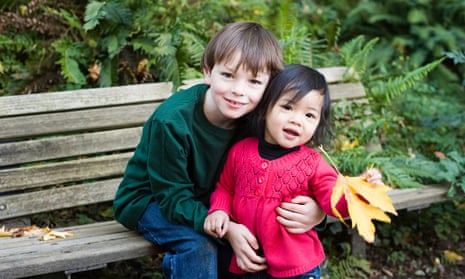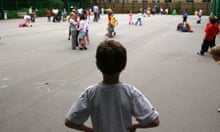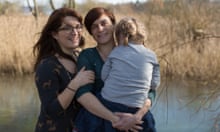If there is one thing that all with an interest in adoption can agree on, it’s the need to tackle unnecessary delays that keep children in care for longer than they need to be. For ministers, one of the key problems has been “politically correct attitudes” that have seen children from ethnic minority backgrounds disadvantaged because a perfectly matched family for life is difficult to find. To this end, legislation was passed last year that removed the requirement on adoption agencies to consider a child’s racial, cultural and linguistic background when a placement is made. Yet for many in the adoption world, a good cultural fit is still an important way of creating a sense of belonging for an adopted child as they grow up and efforts are continuing to increase the pool of black and minority ethnic (BME) would-be adopters.
According to the British Association for Adoption and Fostering (BAAF), it is crucial to tackle delays in the system – but it is also important to consider the identity issues that adoption throws up. “We agree that we shouldn’t be delaying adoptions unnecessarily and we agree that you shouldn’t prioritise ethnicity over the other needs of children, but we didn’t agree that it should be deleted,” says BAAF’s BME policy consultant Savita de Sousa. “Trans-racial adoption can have very good outcomes, but one issue keeps cropping up – and that’s a sense of loneliness and isolation, a sense of not belonging. Adoption is a new identity and when you get the added challenges of people asking ‘Why do you look so different?’ you need to think about whether you are meeting the needs of children.”
So how much longer have BME children been waiting for adoption than white children? De Sousa says it is a complex picture, citing a wait of 919 days for an average white British child from entering care to legal adoption, compared with 996 days for those of mixed parentage. Children of Asian background face an average 835 days, but boys of black African descent face the longest wait – 1,302 days.
The identity issues de Sousa cites are important for some adopters. Lohit Kalburgi, who has gone through the adoption process twice to adopt two boys, now aged four and 18 months, says he and his partner Paul Kalburgi were “really keen” to be matched with children with a mixed Asian and white British heritage. “We feel very fortunate that they matched us from an ethnicity perspective,” he says. “It’s an identity issue potentially for children when they grow older, but also there’s the perspective of having another string to help bind us as a family unit.”
But if identity issues are to play a part, the mismatch between BME children waiting for adoption and the number of would-be adopters from those communities needs to be addressed. The latest official figures show that 78% of children in care in England are white, 9% are of mixed racial background and 7% are black or black British. But when it comes to approved adopters in England, 89% are white, 2% are of mixed racial background and 3% are black or black British. De Sousa says there are a number of reasons for the shortage of BME adopters, including reluctance from some communities to engage with formalised adoption processes, as well as wider issues of disadvantage. “Having a child is a pretty expensive business – you have got to have enough income and people worry that they don’t have a spare room,” she says. “If you are going to attract people from all communities, you have to address their needs and have to look at the inequalities around their economic situation, housing and employment.”
Nonetheless, agencies are making strides to increase the pool of would-be adopters. Action for Children’s Mosaic adoption and permanency service was set up in 2003 to address the shortage of BME adopters and targets a wide range of communities. Team manager Christine Allen says there is still a need to reach out to BME communities because although trans-racial adoption might work well for some, it is not ideal for all. “It raises issues of self-esteem, confidence and feelings of belonging and identity,” she says. “You have got to put the children at the centre of it. We like to think the children we have placed go on to lead content and successful lives.”
East London’s Tower Hamlets council last year launched a recruitment drive for Muslim adoptive parents that has more than doubled the number of families going through the adoption process – or approved to adopt – from four to nine. Last year the total number of families approved for adoption, regardless of ethnic origin, was 16. Gulam Robbani, cabinet member for education and children’s services, says: “We have to do everything we can to get the right kind of adopters – never mind their ethnicity – with the right motivation and abilities. We do think it’s important that children grow up in an environment where they think they belong and we will try to match their heritage. We would not want to keep a child in the system longer than necessary. However, if we’d not even tried that would be negligent.”











Comments (…)
Sign in or create your Guardian account to join the discussion